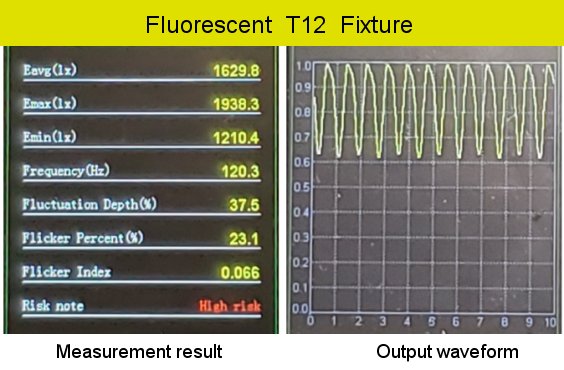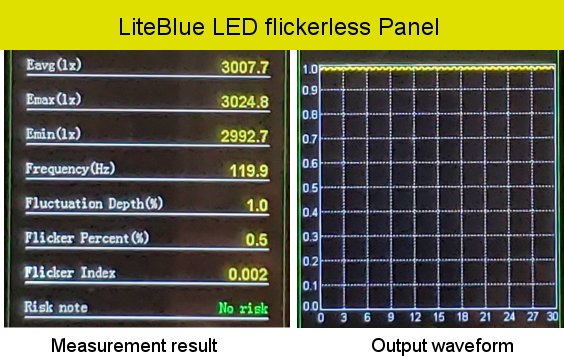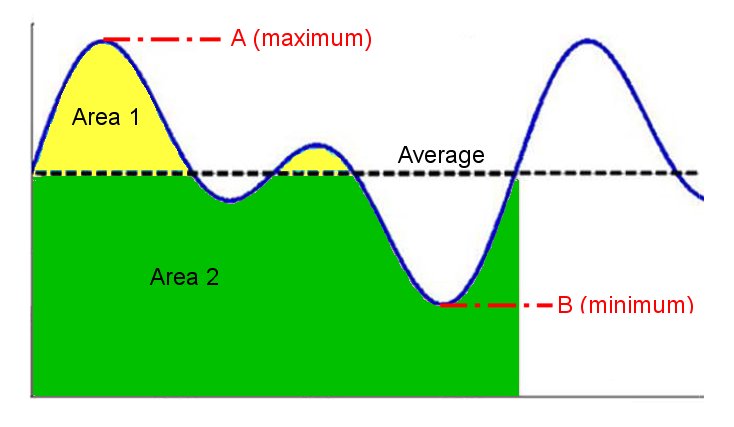| |
The effects of flicker on human are dependent on the light modulation characteristics of the light fixture
and the sensitivity of an individual. People that tend to be more susceptible to the effects of flicker
include children, person with migraine and autism.
|
|
| |
| |
| High flicker exhibited by Fluorescent T12 fixture |
The light flicker generated by magnetic ballast fluorescent fixtures has been linked to headaches, fatigue, blurred
vision and eyestrain. The output waveform of fluorescent T12 fixture is shown at the right.
The peak-to-valley
ratio of the output waveform can be as big as 38%. Flicker Percent of 23.1% has been measured, and it substantially
fails the Recommended Practice 1 of IEEE 1789 (IEEE Recommended Practices for Modulating Current in High-Brightness
LEDs for Mitigating Health Risks to Viewers).
|

|
|
|
|
|
| |
| Low flicker exhibited by LiteBlue LED panel |

|
LiteBlue LED panel incorporates flickerless driver, and its output wavelength is shown at the left. Percent
Flicker and Flicker Index are measured as 0.5% and 0.2% respectively. According to IEEE 1789, the limit of
NOEL (No Observable Effect Level) is 4% for flicker frequency of 120 Hz. Percent Flicker of 0.5% falls well
below the minimum requirement of 4%, and thus it can be considered as no risk.
Also, the output waveform shows that
the peak-to-valley ratio is as low as 1%, which is of very small rippling effect.
|
|
|
|
|
| |
| Flicker metrics defined by IEEE 1789 |
| Two flicker metrics defined by IEEE 1789 are illustrated below, |
| |
| A) |
Percent Flicker
= 100*(Max - Min)/(Max + Min)
= 100*(A - B)/(A + B)
|
| |
| B) |
Flicker Index
= (Area 1)/(Area 1 + Area 2)
|
|

|
|
|
| |
| NOEL defined by IEEE 1789 |
Recommended Practice 2 of IEEE 1789 states that the Percent Flicker should be lower than the below
percentages, so as to meet the requirement of NOEL.
|
| 1. |
Below 90 Hz, Modulation (%) is less than 0.01 x frequency.
|
| 2. |
Between 90 Hz and 3000 Hz, Modulation (%) is below 0.0333 x frequency.
|
| 3. |
Above 3000 Hz, there is no restriction on Modulation (%).
|
|
|
|